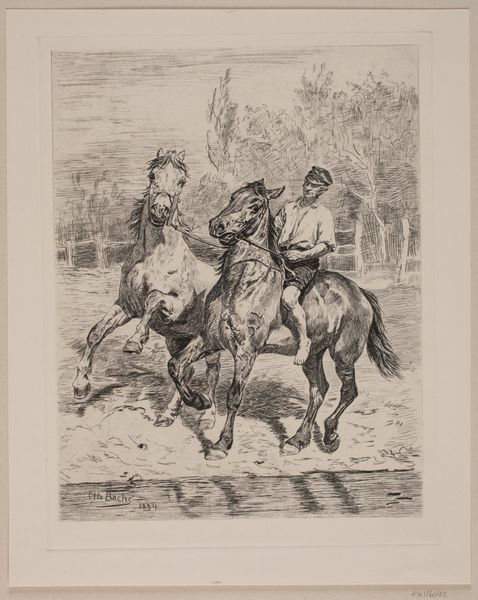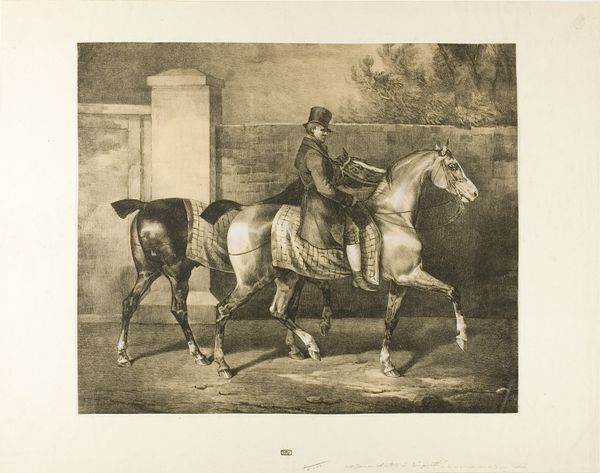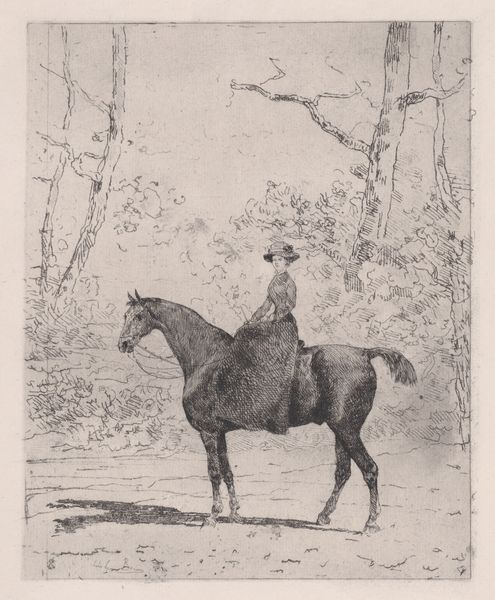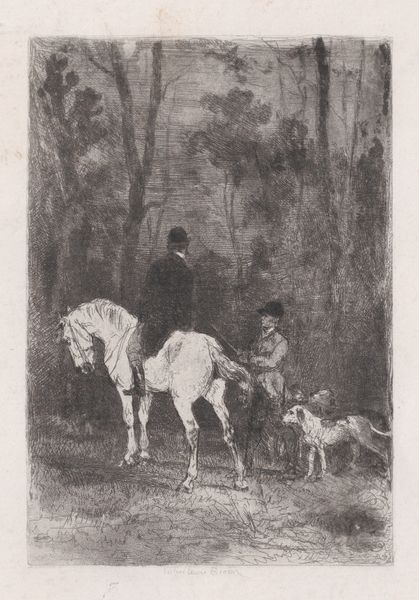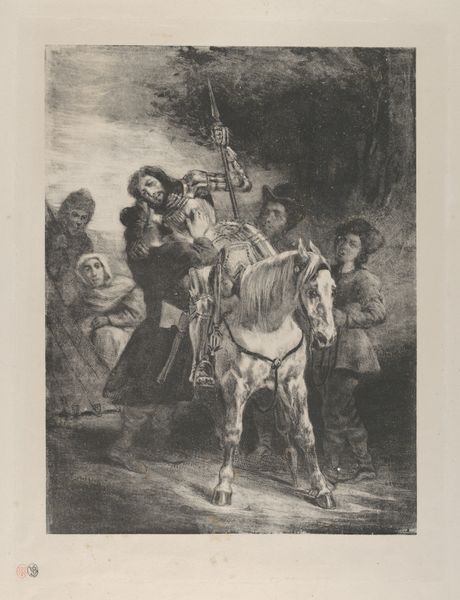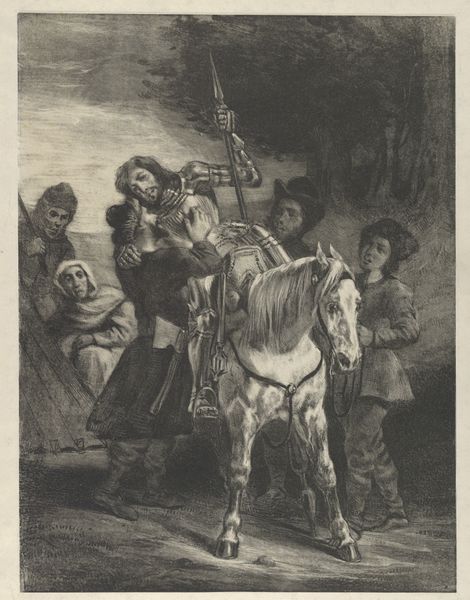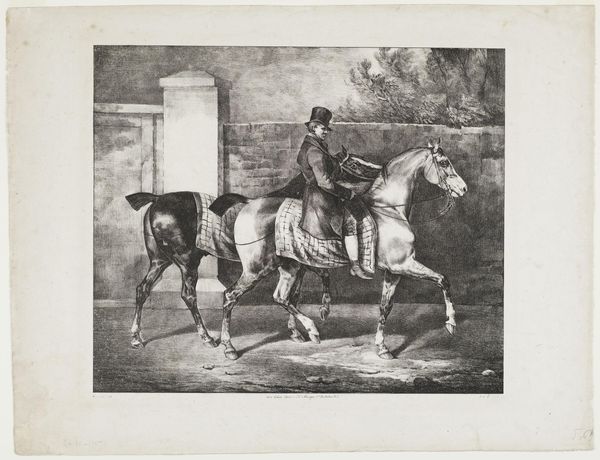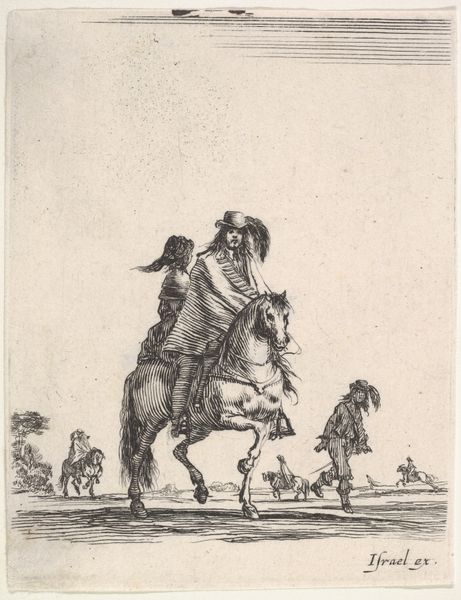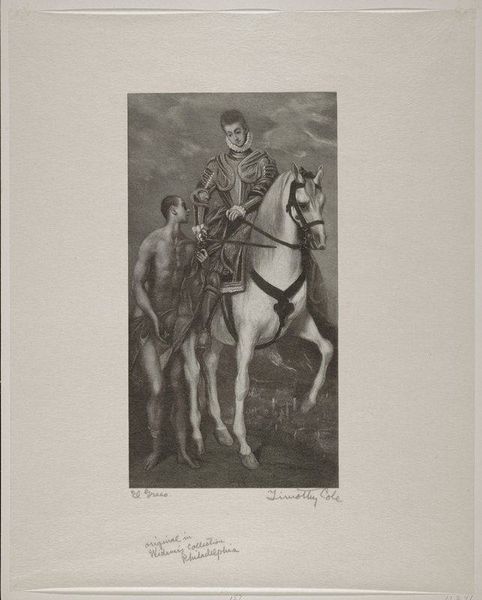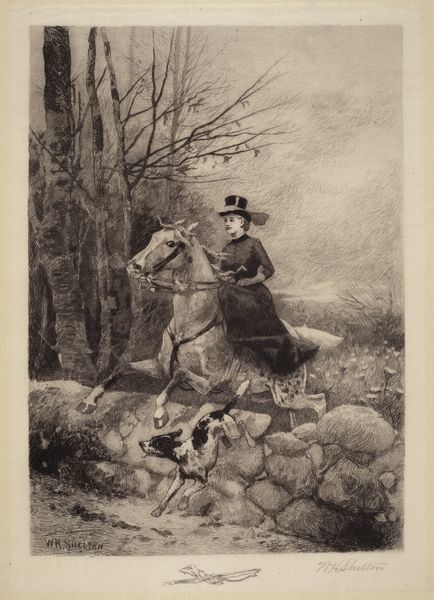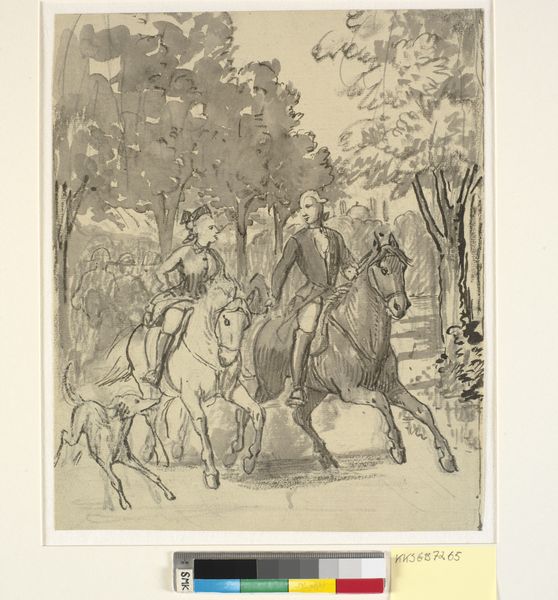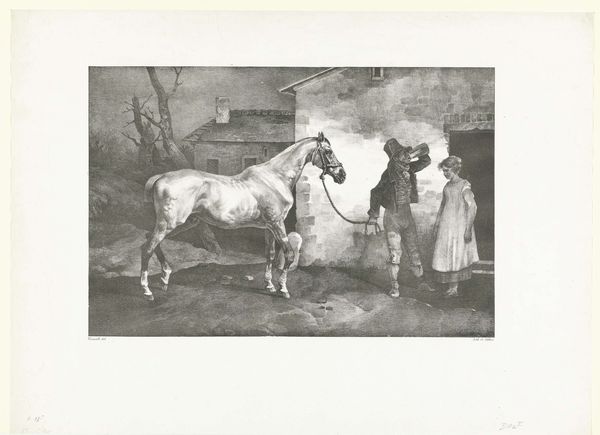
#
portrait
# print
#
caricature
#
caricature
#
figuration
#
group-portraits
#
black and white
#
surrealism
#
line
#
genre-painting
#
history-painting
#
surrealism
Copyright: National Gallery of Art: CC0 1.0
Editor: So, this is "Don Quixote and Sancho Panza" created by Frank Wright in 1967, it's a print, a stark black and white scene. It’s dreamlike, almost unsettling with the dark, scratchy lines. What do you see here, considering the process of printmaking itself? Curator: I’m struck by how the labor-intensive process of printmaking, specifically in rendering this familiar narrative, informs its meaning. Consider the social context of 1967; Wright’s choice to use this older literary theme – Don Quixote's idealism clashing with Sancho Panza’s practicality – rendered through a somewhat laborious process of printmaking could suggest commentary on the changing role of labor, craft and consumption during that period. Does the visual roughness, born from the material process, echo something of societal anxieties around progress and traditional values? Editor: That’s a fascinating point. I hadn’t thought about how the actual creation of the print speaks to the story itself. Do you mean, like, the hard work needed to make the image mirrors the struggles in the narrative? Curator: Precisely. Notice the density of ink, the visible texture of the plate perhaps. These are deliberate choices manifesting meaning. It challenges traditional notions of the 'fine art' print, pulling it into a dialogue about materiality and accessibility of images, doesn't it? What is typically considered the 'aura' of the work here shifts onto production. Editor: It makes me consider who would have owned and consumed this print in 1967. Was it intended for a wider audience due to the medium? Curator: Possibly. The reproductive nature of printmaking inherently lends itself to wider distribution, questioning the exclusivity often associated with art ownership and prompting reflections about cultural production and consumption. Perhaps it’s even critiquing high art traditions by democratizing this imagery through a 'lowlier' medium. Editor: This conversation completely changes how I view this piece, and art as a whole! Curator: Absolutely, engaging with materiality allows a deeper understanding about art within a larger framework of societal structures and practices.
Comments
No comments
Be the first to comment and join the conversation on the ultimate creative platform.
